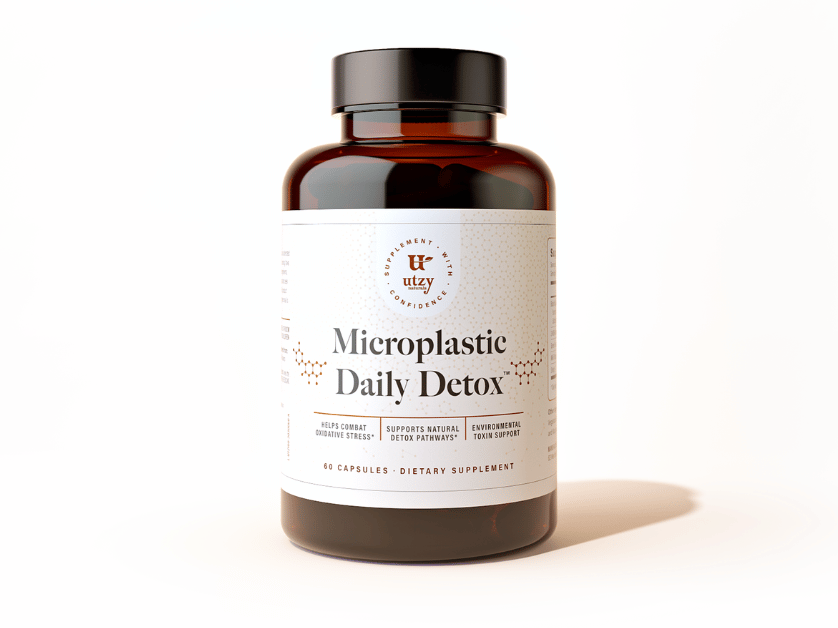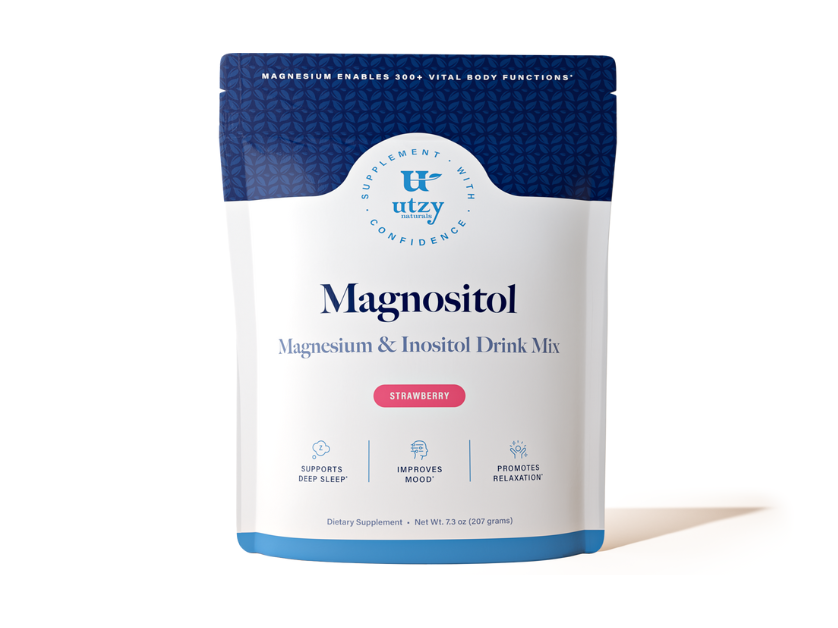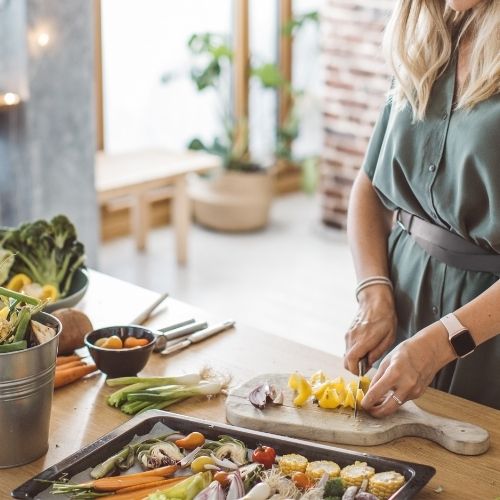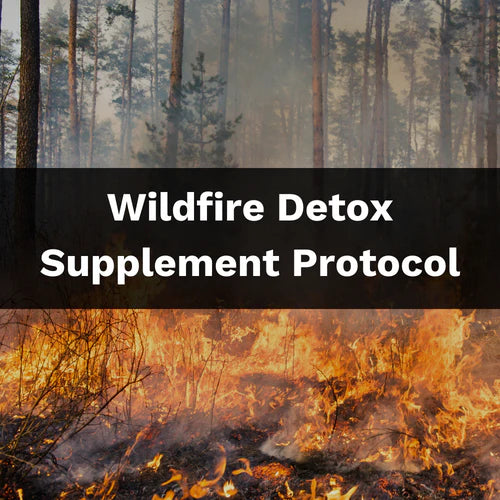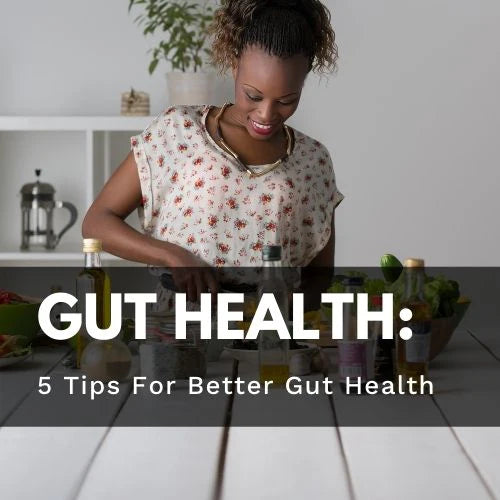shop
learn

Ways to Reduce Single-Use Plastics
April 19, 2021 5 min read
One of our Seven Health Resolutions is to “Reduce your toxic load”.
In addition to being the toxic load on your body, mind and emotions, it also means to reduce your toxic load on your environment.
When it comes to reducing the toxic load on our environment, one of the first places to start is to examine our use of single-use plastics.
Minimizing our use of single-use plastics is both achievable and makes an immediate impact on the environment around us.

What Are Single-Use Plastics?
According to the Natural Resources Defense Council (NRDC), single use plastics are, “goods that are made primarily from fossil fuel-based chemicals (petrochemicals) and are meant to be disposed of right after use.” (1)
These are items that we often use out of convenience, but do not give much thought to the impact of using these items one-time before discarding them. Bottles, serviceware (cutlery, straws, to-go containers), packaging and bags are some of the more common places you will find single-use plastic.
The biggest problem with single-use plastics is that the vast majority of them are never recycled. This results in them ending up in landfills or in the ocean where they can be harmful to wildlife and have other negative effects on the environment.
For example, as these plastics break down, they do not actually disintegrate. Rather, they break up into small pieces, sometimes called microplastic. These microscopic plastic fragments are consumed by wildlife where they accumulate and can lead to death.
Microplastics are oftentimes found in human cadavers, likely from water and food consumption from sources where these microplastics occur. Many of the chemicals used in plastics are known endocrine disruptors (2), which can have a negative effect on the human body.
Shelie Miller, an environmental engineer at the University of Michigan, offers an interesting perspective of single use plastics. Miller says, “most of the environmental impacts of many consumer products, including soft drinks, are tied to the products inside.” (3).
In other words, if there was less demand for the products that utilize single-use plastic, there would be less use of single-use plastics.
If you consider most of the single-use plastics that you would use on any given day, you will discover that most of those items are things that you could go without. Junk food, carbonated beverages and sugar-laden coffee drinks are counter-productive to health. Avoiding these things is not only helpful in reducing the use of single-use plastics, but also enables you to avoid consuming the contents that they contain.
Examples of Single-Use Plastics
According to the NRDC, the United States throws away 2.5 million plastic bottles every hour! (4) If the current recycling rate of 9% is accurate, that means that 2.275 million plastic bottles end up in a landfill or in the ocean every hour.
Here are the top 10 single-use plastics to avoid, according to the World Wildlife Federation (5):
- Plastic Straws - The challenge with recycling straws is their size. Because they are small, they often are not recognized by sorting machines and often fall into cracks and crevices along the way.
- Plastic Drink Stirrers - Like straws, plastic stirrers are often unable to be recycled because of their small size.
- Balloon Sticks - Released balloons eventually find their way back to earth with any attached stick or string. These can be hazardous, and even lethal, to wildlife.
- Plastic Cotton Buds - Like balloons, these one-time-use hygiene products are difficult to recycle and often end up in landfills or in the ocean where wildlife can ingest them.
- Coffee Cups - Most disposable coffee cups are lined with plastics that make them difficult to recycle.
- Coffee Lids - If you need to use a disposable coffee cup, skipping the lid would be one way to minimize your use of a single-use plastic.
- Plastic Cutlery - The unusual shape of plastic cutlery makes it difficult for sorting machines to recycle these single-use plastics.
- Plastic Cups - While styrofoam (polystyrene) is recyclable, most recycling facilities do not accept it as a part of their recycling program.
- Plastic Containers - The food packaging industry is the largest user of virgin plastic, and most of their products are only used once.
- Plastic Plates - Like cutlery, the varying shapes, sizes and colors make this plastic difficult to recycle.
There are instances where single-use plastics may be unavoidable. If so, try your best to reuse or recycle that item to minimize the amount of single-use plastics you are using overall.
Ways to Reduce Single-Use Plastics
The best way to reduce single-use plastics is to avoid them all together. However, there are times where you could benefit from the conveniences that single-use plastics provide. In these situations, substituting the single-use plastic item with a sustainable alternative will have an impact on your overall utilization of single-use plastics.
Here are a few of our favorite single-use plastic alternatives:
- Bee’s Wrap - These organic cotton wraps are coated with a sustainably sourced beeswax, organic jojoba oil, and tree resin. These wraps provide a great alternative to plastic wrap or resealable plastic bags.
- Sheets Laundry Club - These are a plastic-free alternative to plastic-laden liquid laundry soap. These sheets are dissolvable, biodegradable and extremely effective. All of the packaging used is 100% recyclable.
- LastObject - These personal hygiene tools are great solutions to single use cotton swabs, tissues and cotton rounds. In addition to being reusable, they are compostable and environmentally friendly, utilizing no plastic to make them.
- Attitude - This company offers what they call EcoRefills for their personal care products, which minimizes the amount of single-use plastics consumed. Better yet, all of their packaging materials can be recycled once used.
- Bite - These toothpaste bits are shipped to you in a plastic free container while refills are sent in a plastic-free, compostable bag. This simple change saves thousands of plastic toothpaste tubes from ending up in the ocean or landfill.
If you examine your daily rituals and routines, you can quickly identify the single-use plastics that you use. There is likely a solution to either reduce your use, or eliminate it from your life all together.
Fewer Plastics, Better Products
We live in an age where many consumer-packaged good manufacturers are working on providing products that reduce or eliminate single-use plastics, and in the process, are developing even healthier products for their customers.
Utzy Naturals shares in this pursuit, which is why we choose to package our products in an eco-friendly glass bottle, rather than a plastic bottle. Our amber and blue glass bottles are able to be recycled and reduce the amount of single-use plastics used to securely deliver our effective products to your doorstep.
You will find that most products that make an intentional effort to reduce single-use plastics, tend to provide a higher quality product.
You will discover the same to be true with Utzy Naturals. We choose quality over cost, standards over status quo and facts over fads. We are committed to crafting products for you that are safe and truly effective. This is why we stand behind all of our products with our empty-bottle guarantee. If you are unhappy with our products, for any reason, just let us know and we will refund you the cost of that product so you can try an alternative solution.
Closing Thoughts
Simply being mindful of what you consume will make a large impact on how many single-use plastics you consume. Reducing your consumption will reduce your toxic burden on the environment, and ironically, likely reduce the toxic burden on what you consume, resulting in a reduction of the toxic burden on your body.
We would love to hear from you! Comment below with your favorite single-use plastic alternatives.
(2)https://www.niehs.nih.gov/health/topics/agents/endocrine/index.cfm
(4)https://www.nrdc.org/onearth/america-needs-plastics-intervention-nows-time
(5)https://www.wwf.org.au/news/blogs/10-worst-single-use-plastics-and-eco-friendly-alternatives#gs.njeg1wLeave a comment
Comments will be approved before showing up.
Also in Health
Subscribe
Sign up to get the latest on sales, new releases and more …
Join the Utzy Naturals Club!
Sign up and get the latest on sales, new releases, and more...

